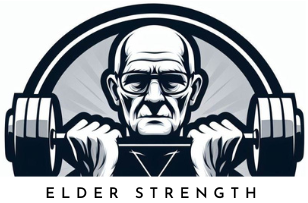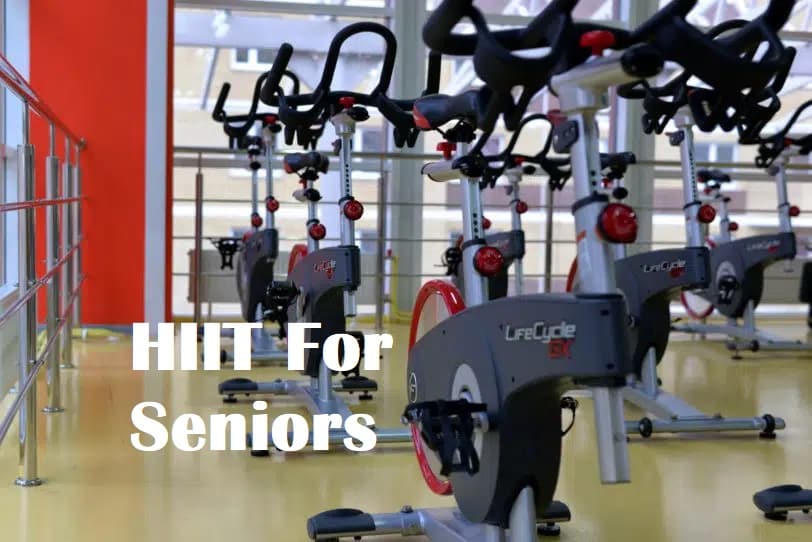In this article, you will learn about HIIT for seniors. HIIT or high-intensity interval training is a popular training method these days. But is it safe for seniors? Read on to find out!
If you have read any health magazines or seen pretty much anything physical training-related, you have likely heard about high-intensity interval training. Or you might have heard or seen the term HIIT. But never cared to find out what it actually means.
Chances are that someone has recommended it to you recently since you are reading this. Unless you are a regular reader of course and didn’t end up here through the search engines.
No matter how you wound up here, if you are interested in HIIT, you are going to learn all about it!
HIIT has been on the lips of the whole health and fitness world for at least a decade now. And it doesn’t seem to be going down in popularity. Let’s see what’s all the fuzz about!
What Is HIIT For Seniors
As we already established, HIIT means High-Intensity Interval Training. It’s not a specific exercise, but more of a method of doing exercise.
HIIT revolves around doing several high intensity, or maximum intensity, bouts of cardio exercise with lower intensity or rest in between sets.
The classic example of HIIT is sprint training. You do a 100-yard dash as fast as you can. You then walk back to the starting line and do another dash. You then repeat this 5 to 10 times.
The idea behind HIIT is that you will achieve a very high heart rate and metabolic stress in a very short time. Essentially you can do the same amount of work in 15 minutes as you would in an hour with typical low-intensity steady-state cardio.
There are of course sports that utilize HIIT as sport-specific training to improve the sport-specific skills. This naturally includes short-distance sprinting. But also sports like football, boxing, rowing, track and field, and ice hockey.

All these sports include high-intensity, short-time-span exercise. Essentially HIIT. Any sport that requires speed, high power output, and anaerobic stamina uses some form of high-intensity interval training.
Why Is HIIT So Popular?
So why is HIIT so popular among regular people looking to stay fit? The main reason has to be the time efficiency. It’s true that you can achieve the same amount of work in a much shorter time frame with HIIT than with regular aerobic exercise.
But you have to understand that for HIIT to be effective, the high-intensity intervals need to be truly high intensity. This means pushing yourself as hard as you can go. And then some.
If you slack doing HIIT by resting the low-intensity intervals and then doing only moderate intensity intervals for short periods, you will not get the real benefits of HIIT.
The other reason HIIT is so popular is that offers several beneficial metabolic effects. Especially to younger people.
HIIT has been shown to increase HGH or human growth hormone, increase cardiovascular health, increase endurance, lower insulin resistance, increase fat oxidation (burn fat), and even enhance cognitive abilities and memory.
Even though HIIT seems to have an astonishing amount of positive effects that would seem perfect for older people, it’s not the magic bullet many like to imply it is. In reality, most exercise likely has the same benefits, it’s just a matter of preference and risk-reward ratio.

It’s true HIIT might be slightly more effective in providing some of the benefits than traditional cardio. But in reality, it doesn’t matter how you exercise. The only thing that really matters is that you exercise routinely.
With HIIT there are definitely also risks involved for seniors.
Is HIIT Safe For Seniors?
In my opinion, HIIT is not the best option for seniors. It can be a very good tool for senior athletes who have a strong base in conditioning. For anyone else, it’s very easy to push yourself too hard in the beginning.
The fact is that HIIT is very demanding on your body. And especially on your heart. If you have not done any kind of high-intensity exercise in years, HIIT can be potentially dangerous.
As we get older our risk of having some form of heart disease or things like arrhythmia increases. Even if you we’re able high-intensity exercise just fine when younger, you should always be careful with high-intensity exercise in older age.
Even if you don’t have any known heart conditions currently, extreme exercise like HIIT can uncover latent coronary artery disease for example. Even if your heart can do its job in the day-to-day it might not be able to handle the workload of HIIT. In a worst-case scenario, this can cause a heart attack.
It’s always wise to start light and progress slowly, so your whole body has time to adapt. I want to be clear that I don’t encourage avoiding exercise because of old age. You are stronger than you think!
Just be smart and don’t take unnecessary risks and always consult your physician when starting a new exercise routine.

So What’s The Option?
HIIT increases your heart rate much closer to the absolute upper limit than lower intensity cardio or strength training. It’s probably significantly safer for seniors to do those two instead. They will provide all the benefits of HIIT with less risk.
Strength training is superior to HIIT in building strength and muscle mass. Low-intensity aerobic exercise is superior to your cardiovascular health. That’s because our blood vessels prefer prolonged, slightly increased heart rate instead of the high stress of maximal heart rate in HIIT.
HIIT can also be very demanding on your recovery capacity in older age. A bout of serious high-intensity exercise can leave you exhausted and fatigued for days. This can prevent you from doing other exercises and chores and lower your motivation to exercise.
If you are a seasoned athlete looking to bring your conditioning up a notch, HIIT might just be the thing for you though. Your body has likely adapted to the rigors of high-intensity training. And you know how to gauge your recovery. Then again, a seasoned athlete won’t likely be reading about HIIT on the Internet.
The last risk with HIIT is a muscle, tendon, and joint injuries. The high speed, force, and intensity expose you to a greater risk of injury due to sprains, impact on the joint, and even stumbling and falling in case of losing balance under exhaustion.
So unless you are a seasoned athlete, you need to seriously think if you want to try HIIT. If you do, I want to emphasize once again the importance of talking to your doctor. Start very lightly and listen to your body.
HIIT Routine For Seniors
If you want to try HIIT in spite of the health risks and get a clearance from your doctor, I recommend using a stationary bike. Preferably one that is equipped with a heart rate monitor or using an external heart rate monitor. There are several benefits to this.
Firstly using a bike makes the risk of stumbling smaller. It’s easy to misstep, lose balance, or even become light-headed under sudden intense exercise.
It’s important to minimize these risks by taking it easy first. Using an exercise bike pretty much prevents you from falling unless you completely faint. Which we clearly don’t want either.
Secondly, it’s much easier to control the low and high-intensity intervals on a high-quality stationary bike. And most of them have a program for interval training.
Here’s a great example of a HIIT routine by The Body Coach TV YouTube channel (YouTube embed, content not created or owned by ElderStrength.com):
You can learn more about using exercise bikes in the articles Indoor Cycling For Seniors [Short Guide With Tips], Best Recumbent Bike For Seniors With Arthritis [With Tips], The best exercise bike for seniors, and Peloton For Seniors.
Keep An Eye On Your Heart Rate
It’s essential to keep an eye on your heart rate. Your maximum heart rate is individual. But if your heart rate starts to jump and you are feeling tightness in your chest or any pain, this is a sure way to know you have to stop right away and alert help.
Your heart rate should also drop during the low-intensity intervals. Let’s say your heart rate is 140 or 150 during a high-intensity interval, it should drop at least 20 bpms during the low-intensity interval and come down closer to 100 within a minute from stopping the exercise. And remember that the individual differences are huge.
If your heart rate stays elevated, you have likely overdone the intensity. In this case, call it a day and give your body plenty of rest for a couple of days and avoid any intense exercise.
Conclusion
We hope you enjoyed reading about HIIT for seniors and got some good ideas for your own training routine.
HIIT definitely has positive effects on health but it poses some real risks for seniors and it’s up to you to gauge if it’s worth the risk. My recommendation is to do lower intensity cardio like nordic walking, cycling, or jogging and combine that with strength training to improve muscle mass, strength and bone strength.
These will give all the benefits of HIIT with less risk. It’s not wise to take unnecessary risks with your health in older age because injuries become slower to heal. A moderate amount of the right kind of exercise is all that is needed to reap the benefits of exercise for living an active lifestyle in older age.
If you have any questions or comments about HIIT training, please drop a line in the comments section below!
Thanks for reading and see you next time.


Good explanation
Thanks Nimal!